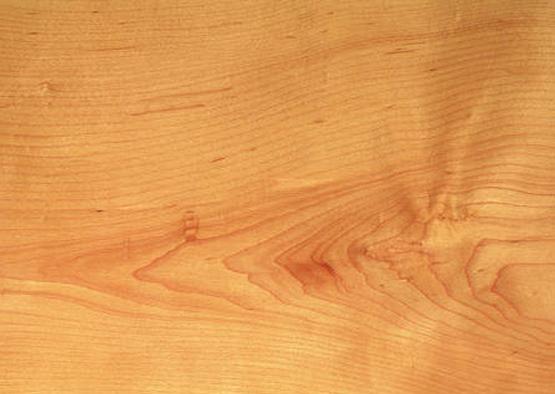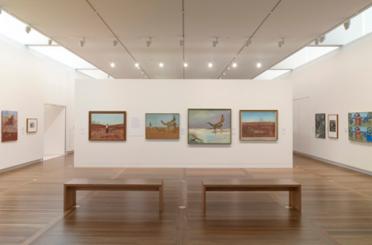American hard maple produces timber with good strength properties and an attractive appearance. Its most common applications are flooring, cabinet making, furniture and interior joinery.
Sugar Maple, Black Maple, Rock Maple, White Maple, Sap Maple
Accer saccharum

American hard maple is a cold weather tree that grows across the north-east States of the US and in Canada. It produces an attractive timber with creamy-white sapwood, sometimes with a pink tinge, and light to reddish brown heartwood. Higher grades of the timber are selected for the white colour of the sapwood, and this can limit their availability. While generally straight-grained, American hard maple can have a distinctive curly, fiddleback or birdseye figure. Figured maple is generally only commercially available as veneer.
American hard maple, as the name suggests, is a hard, heavy wood with a fine texture that is high in all strength properties except for stiffness, which is medium. It is a hardwearing timber, making it ideal for flooring applications where there is a high volume of foot traffic, such as gymnasiums or concert halls. It also has a very good steam bending classification.
American hard maple is considered to be quite difficult to work with due to its blunting effect. Pre-boring is recommended when nailing or screwing. The timber does not take glue well. When care is taken, the timber machines and turns well, and it can be stained and polished to achieve an extremely attractive finish.
Readily available in Australia as both sawn timber and veneer, American hard maple is used in a variety of interior applications, such as furniture, panelling, cabinet making and interior joinery. It is also used in stairs, handrails, mouldings and doors. As mentioned above, the hardwearing properties of American hard maple means that it is an excellent timber for flooring applications in gymnasiums, theatres, concert halls and basketball courts. In its veneer form, American hard maple is also used in the construction of skateboards.
Shrinkage
| Very Low | Low | Medium | High | Very High | |
|---|---|---|---|---|---|

|

|

|
|||
Tangential : |
6.30%
|
||||
Radial : |
3.10%
|
||||
Unit Movement Tangential: |
0.35%
|
||||
Unit Movement Radial: |
0.17%
|
Strength Group

Very High |
High |
Reasonably High |
Medium High |
Medium |
Reasonably Low |
Low |
Very Low |
||
Unseasoned: |
S1 |
S2 |
S3 |
S4 |
S5 |
S6 |
S7 |
S8 |
|
|---|---|---|---|---|---|---|---|---|---|
Seasoned: |
SD1 |
SD2 |
SD3 |
SD4 |
SD5 |
SD6 |
SD7 |
SD8 |
|
 |
Stress Grade

| Structural No. 1 |
Structural No. 2 |
Structural No. 3 |
Structural No. 4 |
Structural No. 5 |
|
Unseasoned: |
|
|
|
|
|
Seasoned: |
F17 |
F14 |
F11 |
F8 |
F7 |
Density per Standard

Seasoned: |
705kg/m3
|
|---|---|
Unseasoned: |
925kg/m3
|
Joint Group

Very High |
High |
Reasonably High |
Medium |
Low |
Very Low |
|
Unseasoned: |
J1 |
J2 |
J3 |
J4 |
J5 |
J6 |
|---|---|---|---|---|---|---|
 |
||||||
Seasoned: |
JD1 |
JD2 |
JD3 |
JD4 |
JD5 |
JD6 |
 |
Colour

| White, yellow, pale straw to light brown | Pink to pink brown | Light to dark red | Brown, chocolate, mottled or streaky | |
 |
||||
Mechanical Properties
Modulus of Rupture - Unseasoned: |
65
|
|---|---|
Modulus of Rupture - Seasoned: |
109
|
Modulus of Elasticity - Unseasoned: |
11
|
Modulus of Elasticity - Seasoned: |
13
|
Maximum Crushing Strength - Unseasoned:  |
28
|
Maximum Crushing Strength - Seasoned: |
54
|
Impact - Unseasoned: |
|
Impact - Seasoned: |
|
Toughness - Unseasoned: |
Medium - 15 - 24 Nm
|
Toughness - Seasoned: |
Medium - 15 - 24 Nm
|
Hardness - Unseasoned: |
4.3
|
Hardness - Seasoned: |
6.4
|
Durability
| Low | Moderate | Reasonably High | High | |
| (0 - 5 yrs) | (5 - 15 yrs) | (15 - 25 yrs) | (more than 25 yrs) | |
In-Ground: |
 |
|||
| (0 - 7 yrs) | (7 - 15 yrs) | (15 - 40 yrs) | (More than 40 yrs) | |
Above ground: |
||||
| (0 - 20 yrs, usually < 5) | (21 - 40 yrs) | (41 - 64 yrs) | (More than 60 yrs) | |
Marine Borer Resistance: |
 |
Lyctid Borer Susceptibility: |
Susceptible |
|---|---|
Lyctid Borer Susceptibility - Other: |
|
Termite Resistance: |
Fire Properties
Bushfire Resistance: |
Not tested
|
|---|
American hard maple is an attractive creamy white timber with a pinkish tinge. Heartwood can vary from a light to dark reddish brown, depending on the growing region. Both the heartwood and sapwood can have a pith fleck. The timber is fine-textured and generally straight-grained. Sometimes a curly, fiddleback or birdseye figure can occur, which is considered to enhance the appearance of the wood. American hard maple sapwood darkens over time when exposed to UV light.
American hard maple is used in a wide range of interior applications such as flooring, panelling, cabinet making, table tops, joinery, stairs, handrails, mouldings and doors. Its hardwearing properties make it ideal for flooring in areas with a high volume of foot traffic. It is also used in boat building and in the construction of musical instruments and skateboards.
A hard, heavy timber, American hard maple is considered to be quite difficult to work. However, when care is taken it machines and turns well, and can be glued satisfactorily. Pre-boring is recommended when nailing and screwing. The timber steam bends well. When sanded, stained and polished, the timber has an extremely attractive finish.

